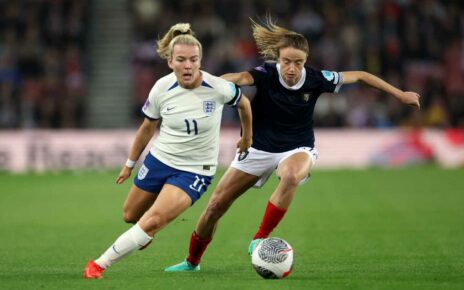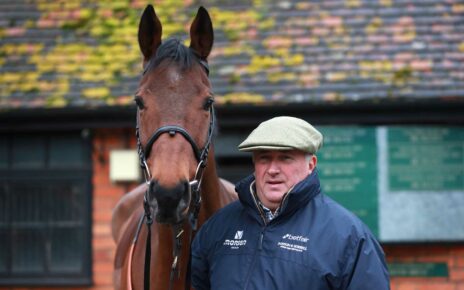When Mackenzie McDonald dueled Félix Auger-Aliassime for three and a half hours in the opening round of the U.S. Open, fans were only seeing a glimpse of the time McDonald put in toward his surprise win on Monday.
For both players, and hundreds of others at the sprawling tournament, a match day extends well beyond a warm-up and the contest itself. The preparation, of course, takes weeks and months, with the grueling men’s and women’s professional tennis tours pushing players to seek higher rankings to gain a more favorable path at the Grand Slam tournaments.
And once they arrive in Queens, a new series of obstacles emerges as players adapt to the feel of the courts, the ambience of New York and the demands of one of the world’s biggest sporting events.
For McDonald, the 28-year-old American who broke into the top 50 of the singles rankings in 2022 and upset Rafael Nadal in the second round of this year’s Australian Open, the preparation for the U.S. Open began on Aug. 22 when he arrived in New York. McDonald, who is scheduled to play Borna Gojo of Croatia in the second round on Wednesday, said he trained hard for his first few days, then tapered a bit to recover before his four-set duel against Auger-Aliassime.
Those practices, along with the travel, can become repetitive. Jessica Pegula, the American ranked third in women’s singles, last week compared the routine on tour to “Groundhog Day,” the 1993 film in which a man relives one day again and again. McDonald echoed that sentiment.
“Things can get monotonous week after week, locker room after locker room, hotel after hotel,” McDonald said. “It’s good to have those small goals or little things that drive you that make you believe that you can get better.”
Two Days Out
Two days before his opening match, McDonald couldn’t focus solely on his play. Before practicing on Saturday, he had to stop by a fan event put on by Wilson, his racket sponsor.
His day began at about 8:45 a.m. as he made his way down to the lobby of his hotel in Manhattan’s Murray Hill neighborhood. A driver and S.U.V. were already waiting for him, his girlfriend and his trainer as they walked out of the hotel.
On a normal day, the drive from the east side of Manhattan to Billie Jean King National Tennis Center in Flushing Meadows Corona Park can take up to an hour in heavy traffic.
“It’s never easy,” McDonald said of the commute to Queens. “Day after day, it definitely adds up.”
But on a Saturday morning, with little traffic and an assertive driver familiar with shortcuts, the ride was a brisk 21 minutes 16 seconds.
The quick ride afforded McDonald some extra time to drop off his bags before heading to the Wilson event, where he spent about half an hour volleying with children, then posed for pictures and videos.
With that commitment filled, McDonald could focus on more intense tennis for the rest of his day, starting by working with a physiotherapist and finding time to eat, and following that with two hours of practice.
McDonald’s first hour of practice was scheduled at noon against Marcos Giron, another American player, on Court 4 near Arthur Ashe Stadium. As McDonald and Giron hit back and forth and played out points, dozens of fans stopped by to watch them. As their practice drew to a close, several of those fans began to gather courtside in hopes of an autograph or a picture. But McDonald had no time. After shaking hands with Giron and his trainer, McDonald quickly grabbed his bags, and scurried off for his next practice on a court on the opposite end of the tennis center, nearly half a mile away. To avoid having players walk that distance through a sea of fans, the U.S. Open has vans that shuttle them and their trainers out to the farthest practice courts. McDonald and his trainer hopped in a van, but the driver wanted to stay a few more minutes to see if any other players would come. Already behind schedule, McDonald politely asked the driver if they could leave without waiting. In the early rounds of the tournament, when hundreds of players need to practice, court time is precious. “They definitely show the glamour of the sport on TV,” McDonald said. “It is all the behind the scenes, it is the day to day and the around-the-year tournaments that we play that really get us to these moments.” By the time McDonald arrived to his next practice court, it was just after 2 p.m., and the sun was beaming down with temperatures in the 80s. He trained for another hour before finally cooling down and heading back to his hotel to rest. On Sunday, McDonald wanted to scale back his workload to only an hour of tennis, so he could be fresher for his match the next day. He still did not know his exact playing time, but because it would likely be in the afternoon, McDonald said he hoped to have an afternoon court slot on Sunday. He was scheduled for 4 p.m. against Lloyd Harris of South Africa on Court 5, where McDonald was scheduled to play the next day. “Way more of a chiller day for me,” McDonald said, adding that the rest of his Sunday would be spent resting, hydrating and taking “my mind off of tennis for a bit.” But even when he’s not training, McDonald said there’s other preparation that goes into playing a match, including creating a game plan and looking over analytics. “The mental preparation for my match on Monday started once that draw came out,” he said. Before McDonald’s match on Monday, there were three others scheduled on Court 5, starting at 11 a.m. Being scheduled later in the day often leaves players trying to figure out how long each of those matches will last so they can plan an ideal time to leave their hotel. But trying to make those predictions can be a gamble when rain or a lengthy five-set men’s match can delay another match’s start time. At majors, McDonald said that he likes to arrive four hours before a match to be treated by a physiotherapist, hit with a partner for half an hour, have lunch and then prepare his sports drinks and rackets. “There’s definitely a lot of little nuances that go in part of each day that you’re really submerged in,” he said. “Everything’s invested toward what’s going to prepare me best to play this match today.” McDonald and Auger-Aliassime finally took Court 5 around 5:45 p.m., and after a quick warm-up, it was 5:51 p.m. when the umpire, Jaume Campistol, said: “Ready? Play.” From the beginning, it looked like the match was going to be a long duel. It took an hour and nine minutes for McDonald to win the first set on a tiebreaker. Auger-Aliassime took the second set, but after that McDonald settled in. As McDonald and Auger-Aliassime played on, cheers from Arthur Ashe Stadium overflowed out of the venue, and they could be heard on Court 5. At one point in the fourth set, Auger-Aliassime appeared to complain to the chair umpire about the noise coming from Ashe. Eventually, after more than three hours on the court, McDonald prevailed, winning the last five points of the fourth set to win, 7-6 (5), 4-6, 6-1, 6-1, and advance to the second round. Before his win, McDonald said that each incremental victory is what motivates him on tour. The drive to advance, he said, pushes him through long practices, commutes and extensive travel. “I want to win a title so bad,” said McDonald, who has made one singles final in his career, losing to Jannik Sinner of Italy at the 2021 Citi Open in Washington, D.C. “I always find that each week, your opportunity each week, can be that week that can shift things, and I think that dream is what we’re all chasing.” And after he beat Auger-Aliassime, the routine of mental and physical preparation began again for Round 2. Jesus Jiménez is a general assignment reporter. More about Jesus Jiménez Hiroko Masuike is a photographer and a staff editor for The Times. More about Hiroko Masuike Source: Read Full ArticleLast Practice
Match Day






